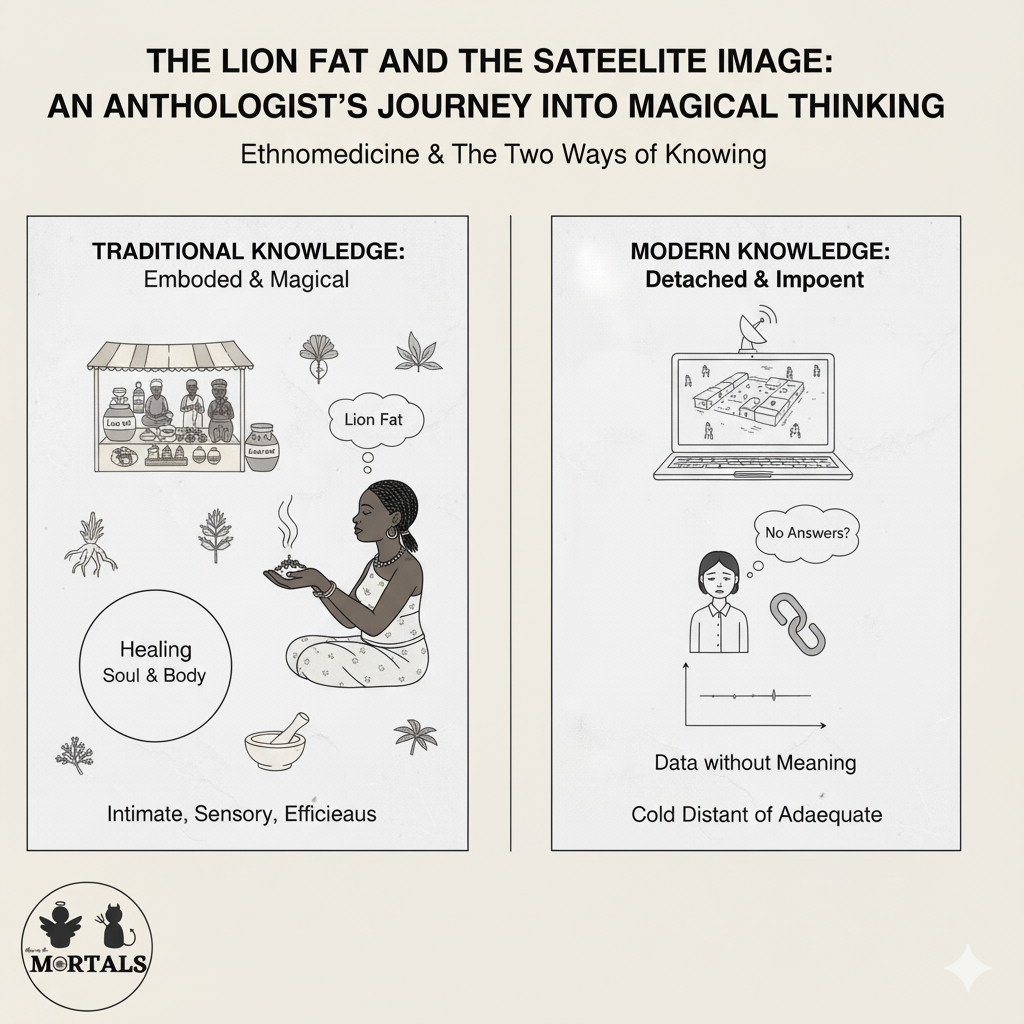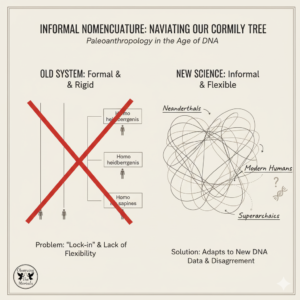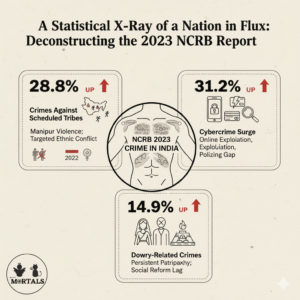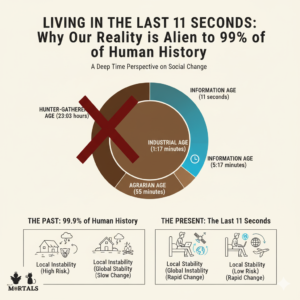In the bustling central market of Bamako, Mali, a man searches for a piece of lion fat to treat his arthritis. Months later, thousands of miles away, an anthropologist stares helplessly at a cold satellite image of a village where her friend has been massacred. These two powerful images lie at the heart of Anna Badkhen’s profound and personal essay, “In praise of magical thinking.” It is an exploration of two different ways of knowing the world: the ancient, embodied, and “magical” knowledge of traditional healing, and the detached, often inadequate, knowledge of the modern, rational West. This case study is a journey into that tense, and often tragic, space between them.
The Information Box
Syllabus Connection:
- Paper 1: Chapter 9.6 (Medical Anthropology: Ethnomedicine), Chapter 5 (Anthropology of Religion: Magic), Chapter 1.8 (Research Methods: Reflexivity), Chapter 12 (Postmodernism)
Key Concepts/Tags:
- Magical Thinking, Ethnomedicine, Traditional Knowledge, Paul Stoller, Medical Pluralism, War, Displacement, Fulani
The Setting: Who, What, Where?
This case study is an example of reflexive anthropology, based on the personal experiences and reflections of author Anna Badkhen. Her narrative is woven around her long-term friendship with her guide, Amadou Gano, a Fulani man in Mali. The essay powerfully juxtaposes the intimate world of traditional healing (the Bamako market, the use of myrrh) with the brutal, large-scale reality of the ongoing civil war and ethnic violence in Mali, a conflict which has displaced thousands of nomadic Fulani people and directly impacted the author’s own friends.
The Core Argument: Why This Study Matters
This essay is a powerful, narrative-driven defense of the value and legitimacy of traditional, non-Western knowledge systems, often dismissed as “magical thinking.”
- Traditional Knowledge as a Global, Effective System: The author masterfully uses the example of myrrh—used by her friend to cure her headache—to demonstrate that what might seem like a simple local folk remedy is, in fact, part of a vast, global, and ancient body of effective medical knowledge, recognized by civilizations from ancient Egypt and traditional China to 19th-century America. She argues that in forgetting this knowledge, we are “unremembering how to stay alive.”
- “Magical Thinking” as a Tool for Healing Soul and Body: The essay argues that these practices are not just for physical ailments. When the author is suffering from the emotional trauma of an abusive relationship, her Malian friend prescribes a simple ritual involving four burning matches and a bowl of water. This shows that “magical thinking” is also a powerful tool for psychological and spiritual healing, providing a sense of agency, meaning, and hope in the face of suffering that cannot be touched by modern medicine.
- The Cold Impotence of Modern “Knowledge”: The essay’s most devastating point is its contrast between the efficacy of traditional knowledge and the cold impotence of modern technology in the face of real tragedy. Amadou’s myrrh can cure a headache. But when the author’s Fulani “uncle” is murdered in a massacre, all her modern tool—Google Earth’s satellite view—can provide is a “goddamn computer-generated image” that offers no understanding, no comfort, and no justice.
The Anthropologist’s Gaze: A Critical Perspective
The entire essay is an application of the anthropological gaze, but it highlights several key theoretical and methodological approaches.
- A Postmodern and Reflexive Method: This essay is a classic example of postmodern and reflexive anthropology. The author, Anna Badkhen, is not a detached, “objective” observer. She is a central character in her own story. She shares her fears, her grief, her friendships, and her biases, using her personal, subjective journey to illuminate the cultural phenomena she is observing.
- The Anthropology of Emotion and Experience: The essay prioritizes the lived, sensory, and emotional experience of being in the world. The smell of myrrh, the reek of lion fat, the “unnameable” feeling of grief—these are not just background details; they are central to the anthropological understanding the author is trying to convey. It’s a move away from abstract, structural theories and towards embodied knowledge.
- Juxtaposition as an Analytical Tool: The author’s primary analytical method is juxtaposition. She constantly places the “magical” next to the “profane” (the sacred exorcism on the beach followed by a boy urinating) and the traditional next to the modern (the lion fat for healing next to the keys for valet parking). This forces the reader to see the world not as a set of neat, separate categories, but as a complex, contradictory whole, a “thaumatrope” where both wonder and depravity coexist.
The Exam Angle: How to Use This in Your Mains Answer
- Types of Questions Where It can be Used:
- “What is ethnomedicine? Discuss its relevance in contemporary society.”
- “Critically analyze the function of magic in society.”
- “Discuss the significance of reflexive and postmodern approaches in anthropological research.”
- Model Integration:
- On Ethnomedicine: “Ethnomedicine is not merely ‘superstition’ but often a repository of effective traditional knowledge. As Anna Badkhen’s essay on Mali illustrates, remedies like myrrh, often dismissed in the West, have a long and cross-culturally validated history of use for their anti-inflammatory and other medicinal properties, forming part of a ‘people’s pharmacopoeia’.”
- On Magic: “Beyond its literal claims, magic serves a crucial psychological function. As seen in the essay ‘In praise of magical thinking,’ a simple healing ritual prescribed by a Malian friend can provide a sense of agency and hope in the face of emotional trauma, demonstrating that ‘magical thinking’ is a key human strategy for sustaining ourselves through hardship.”
- On Reflexive Anthropology: “Reflexive anthropology uses the researcher’s own experiences and emotions as data to illuminate cultural phenomena. Anna Badkhen’s essay on her time in Mali is a powerful example, where her personal friendships, her moments of sickness, and her grief become the very lens through which she analyzes the clash between traditional knowledge and modern violence.”
Observer’s Take
Anna Badkhen’s essay is a profound and poetic defense of the knowledge systems our modern world has sought to forget. It is a journey that moves between the intimate warmth of a friend’s healing touch and the cold, distant gaze of a satellite image, showing the power of the former and the ultimate inadequacy of the latter in the face of true human suffering. The essay does not claim that lion fat can stop a war, but it powerfully suggests that the worldview that understands the lion fat—a worldview of wonder, connection, and “magical thinking”—is precisely what has sustained humanity through millennia of violence and loss. It is a call to re-learn what our ancestors all once knew: that to be fully human is to embrace not just what we can explain, but also what we can only feel.
Source
- Title: In praise of magical thinking
- Author: Anna Badkhen
- Publication: Aeon
- Link: https://aeon.co/essays/in-praise-of-the-magical-thinking-that-sustains-our-humanness





